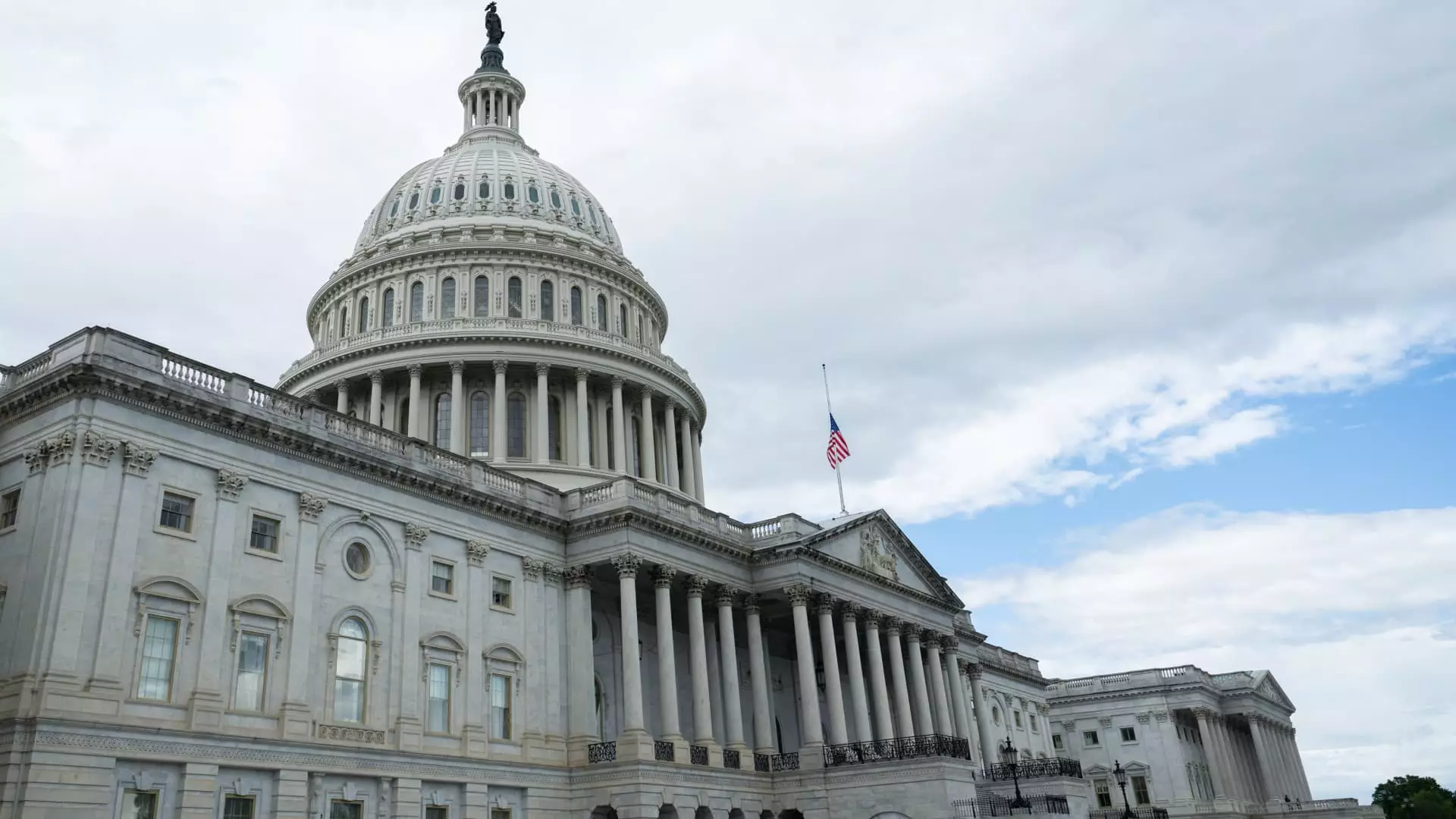The recent passage of a sweeping tax cut package by House Republicans is not just a legislative move; it’s an economic time bomb waiting to explode. The bill, affectionately dubbed the “One Big Beautiful Bill Act” by its proponents, is projected to add an astonishing $3.1 trillion to the national debt over a decade, according to estimates from the Committee for a Responsible Federal Budget. The Penn Wharton Budget Model offers an even graver outlook, predicting a staggering $3.8 trillion in additional debt. Such figures are not mere numbers; they represent a staggering burden that threatens to destabilize the foundations of American economics.
When prominent members of the GOP, like Rep. Thomas Massie and Sen. Rand Paul, raise alarms about what they call a “debt bomb,” it’s essential to pay heed. Massie’s description of the fiscal recklessness as “fantasy math” underscores a deep-rooted concern that the party is straying from fiscal prudence. These concerns are not unfounded, as they echo the sentiments of economists who warn that inflated national debt can reverberate through household finances, impacting consumer borrowing rates and everyday life.
The Hidden Costs of Tax Cuts
At first glance, a tax cut may appear as a boon to households and businesses alike. However, the sinister undertones of this legislation reveal a stark truth: the tax cuts are disproportionately weighted towards the wealthy. Approximately $4 trillion in tax reductions primarily benefit higher-income households, leading to concerns that the broader population will shoulder the burden of increased deficits through cuts to vital safety-net programs like Medicaid and food assistance. The legislative proposal seems less about stimulating the economy and more about exacerbating inequalities that plague the American landscape.
Federal debt surpassing national spending on defense and becoming the second-largest expenditure after Social Security is hardly a responsible fiscal strategy. The average American may dismiss the rising national debt as an abstract concern, but its implications are real and immediate. The interconnectivity between federal borrowing, consumer debt, and interest rates cannot be overstated. Higher national debt signifies higher interest rates down the road—those self-same rates that dictate what we pay for homes, cars, and even educational loans.
The Rising Tide of Interest Rates
Economists like Mark Zandi argue that the continued increase in borrowing will inevitably lead to higher interest rates, making it costlier for families to finance significant purchases. As the prospect of mounting debt looms, consumers can expect the financial landscape to shift dramatically, pushing the dream of homeownership further out of reach for countless individuals. If government borrowing drives the yield on 10-year Treasury bonds up by even a fraction, the cascading effects on mortgages will drive them upward as well, creating a vicious cycle that stifles economic mobility.
Moreover, a significant factor weighing on this economic conundrum is the historical context. The ongoing rise in national debt has already pushed the debt-to-GDP ratio to alarming heights, and projections indicate it could skyrocket further, potentially reaching 148% by 2034 if current legislation holds. Such a trajectory not only endangers U.S. economic credibility but undermines the foundational tenets of responsible governance.
Investor Anxiety and Market Volatility
The ripple effects of increased borrowing extend beyond households, impacting the broader investment landscape. The perception of higher risk associated with increased U.S. debt could lead to investor flight, as capital markets react to the potential for delayed debt obligations. Rising Treasury yields are already causing investor jitters, challenging the notion that U.S. bonds remain a safe haven for capital preservation. Consequently, the bond market’s reaction is not merely an indication of financial uncertainty; it’s a reflection of a broader systemic issue looming on the horizon.
It’s disheartening to witness a legislative agenda that seems dismissive of the fiscal implications for future generations. Like pouring gasoline on a fire, enacting a bill with such profound repercussions signifies a lack of foresight. As Philip Chao aptly notes, “It’s adding to the problems we already have,” encapsulating the sentiment of many who view this as a reckless escalation towards fiscal chaos.
Our Economic Future at Risk
In a landscape where fiscal responsibility is increasingly sidelined in favor of short-term gains, assessing the long-term implications of such unprecedented tax cuts is critical. The fiscal recklessness of the “One Big Beautiful Bill Act” serves as a reminder to the electorate of the weighty choices that shape economic futures. This legislation threatens to entangle American families in a cycle of high-interest debt and limited opportunity for growth, framing a dismal economic narrative that few seem willing to confront directly.
It is time for citizens and policymakers alike to recognize the gravity of our fiscal reality. Oversight, accountability, and a commitment to sustainable economic practices must serve as the backbone of our governance. As we stand on the precipice of this debt crisis, the questions we must face are stark: Are we willing to sacrifice our economic future on the altar of short-term political ambition? The answer will define not just our economic landscape but the very fabric of society for generations to come.

